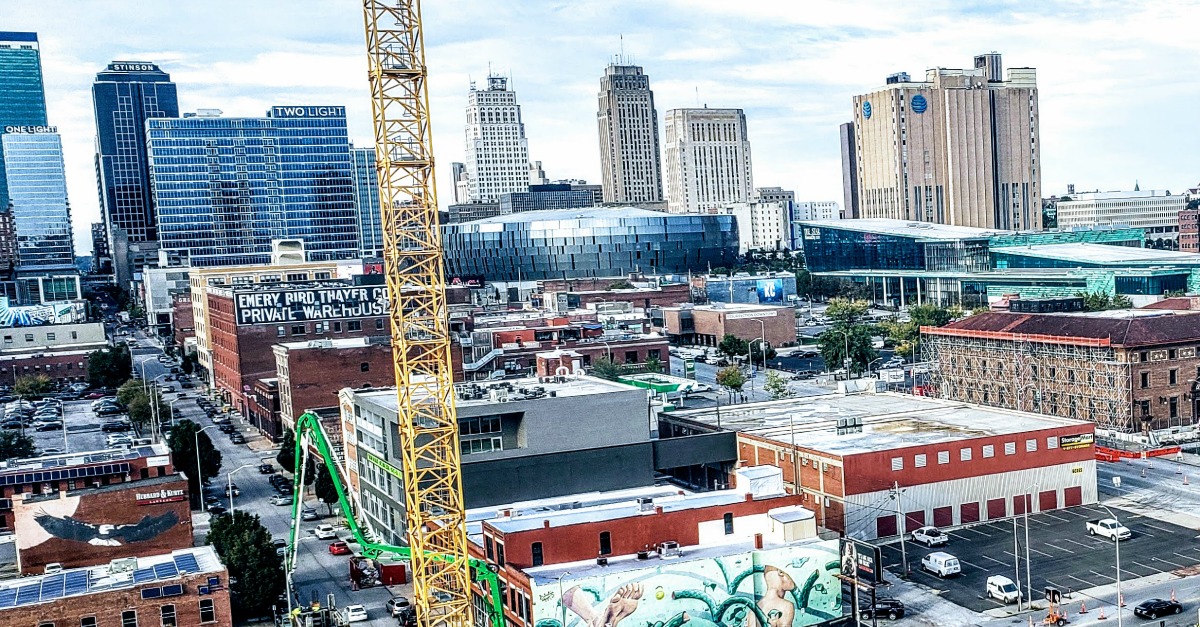Expansion of the KC Streetcar is inspiring developers to reimagine the potential of historic property in and around the Crossroads District. The rewards could be enormous but building it won’t be easy because the subgrade is full of unusual surprises. We begin our blog series on construction realities in the Crossroads with a snapshot of difficulties that can stretch project timelines and balloon budgets without proper due diligence and the right geotechnical expertise.
Uncertainty Comes Naturally
Ready for familiar and predictable subgrade conditions that allow you to build the same way you did last time? Well, you probably won’t find them in the Crossroads. There isn’t much about the area that’s typical and that’s been the story for a very long time. 300 million years of powerful natural forces have shaped a valley of unusual character centered in an area generally framed by the high ground along I-670 on the edge of downtown, Union Hill to the south, Broadway Boulevard to the west, and well beyond The Paseo to the east.

“Glaciers had a tremendous impact on the area,” says Engineering Geologist Consultant, Dr. Paul Hilpman. “The results of their activity left a wide variation of bedrock elevations behind in the general area of the Crossroads. Bedrock can be found just below the surface in some spots and deeply buried in others.”
Hilpman has been researching, analyzing, and advising local leaders about the geological realities of the Kansas City area for decades. He knows the entire complicated story of how water, sediments, and extraordinary natural processes have combined to create an area full of contrasts and inconsistencies.
“You’ve got high limestone bluffs to the north and south, and then in the middle, you may have to go down 150 feet or more below the surface to find bedrock,” explains Hilpman. “In addition, both the type and quality of ground material at any particular location may be very different from another location and may even vary within the footprint of a planned structure. Groundwater conditions are unpredictable as well. Digging can cut into pools and create a watery mess for construction.”
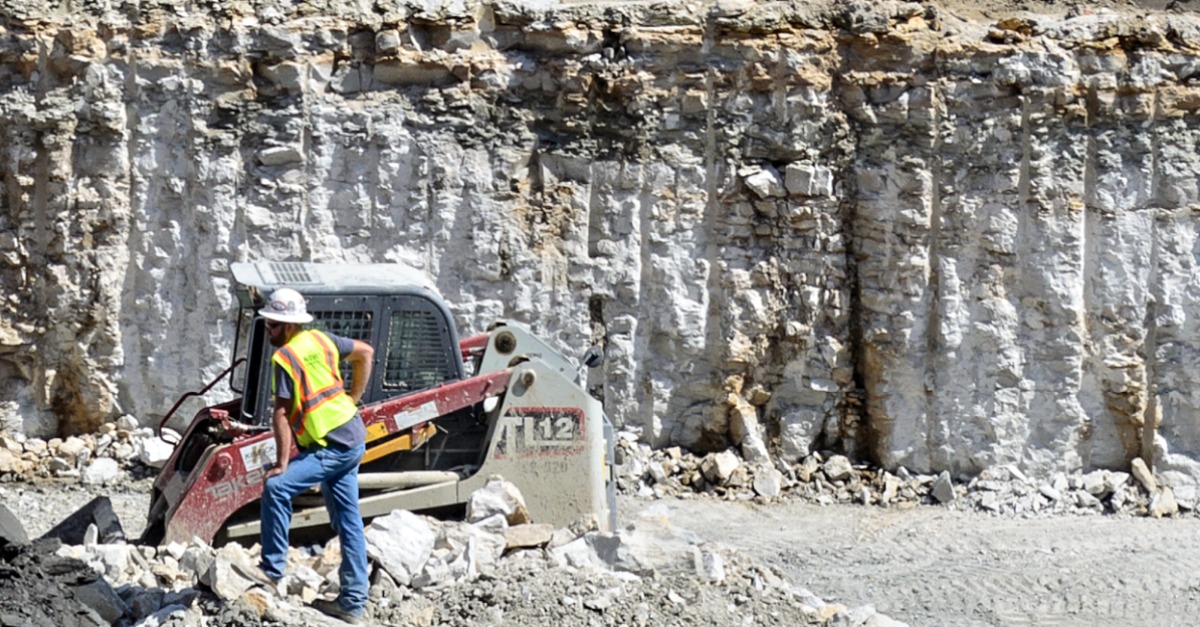
Bedrock throughout the area consists of varying layers of limestone and shales interspaced with sandstone, coal and other permeable materials that can form perched water tables that bleed into excavations.
Hilpman’s understanding of Crossroads geology and the many chapters in its long history is more extensive than you can imagine. All of it points to a warning for anyone thinking about building from the ground up. “Wherever you want to dig, you’ll have to pay extremely close attention to the subgrade. You’re going to need a clear understanding of what you’re dealing with on that specific property. How far down is the bedrock and what kind of other material is involved? Is there groundwater? What is the bearing strength of the soil? How resistant is it to changes over time?”
Those are essential questions and accurate answers can only come from local geotechnical professionals with enough experience to take on such a complicated investigation. Hilpman says it should be a very high priority and completed before the design phase of any project. “This area is full of unknowns. The more you shed light on what you’re working with in advance, the fewer the surprises when you begin building. No one wants subgrade surprises during construction. You’ve got to investigate first. Otherwise, the risk in this area is just too big.”
Prepare for Man-Made Mysteries as Well
If you could scrape off the surface of downtown Kansas City and much of the Crossroads area, you’d reveal a dizzying array of man-made materials connected, combined, crisscrossed, and cut right through each other. Layers of infrastructure history go extremely deep and have been stacking up since the 19th century.
“It’s like the wild west down there,” says NUCA Vice President Mac Andrew, a local construction industry icon and public works giant with a resume of leadership roles stretching back decades on both sides of the state line. “So much of what’s below the surface is a mystery and all of it is interrelated. You have to be extremely careful with what you find and how you handle it because one problem can quickly lead to another and another.”
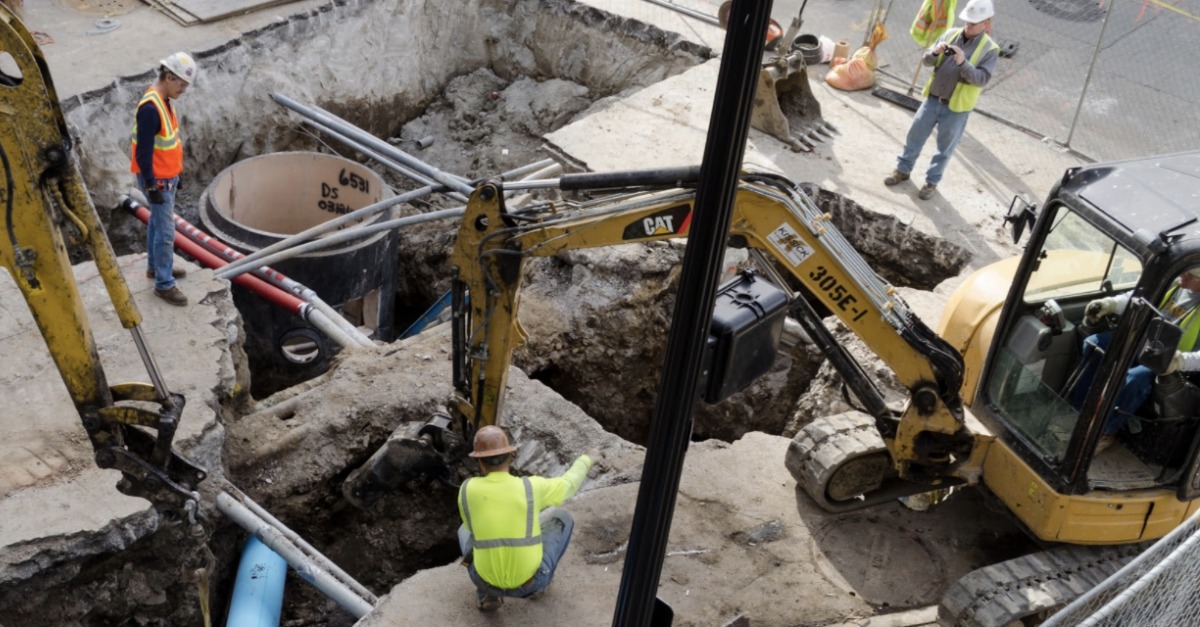
Kissick Construction carefully navigated a complicated underworld during the construction of the first phase of the KC Streetcar line.
Much of the chaotic configuration consists of water and sewer system components, including the massive OK Creek diversion tunnel that’s been draining waste since the 1850s. The tunnel runs through the heart of the Crossroads about a hundred feet deep as it passes under Union Station where it was fully enclosed in concrete and buried just before construction of the station.
The sewer tunnel curbed nasty flooding that had become a way of life in the area back then. But varying groundwater levels in all the fill material used to bury OK Creek and support nearby construction are an ongoing risk for builders. Leaky pipes and runoff from miles of pavement make the underground water challenge even more unpredictable.

1910 announcement of a master plan to convert the OK Creek open sewer into an enclosed diversion tunnel buried underground in preparation for construction of Union Station.
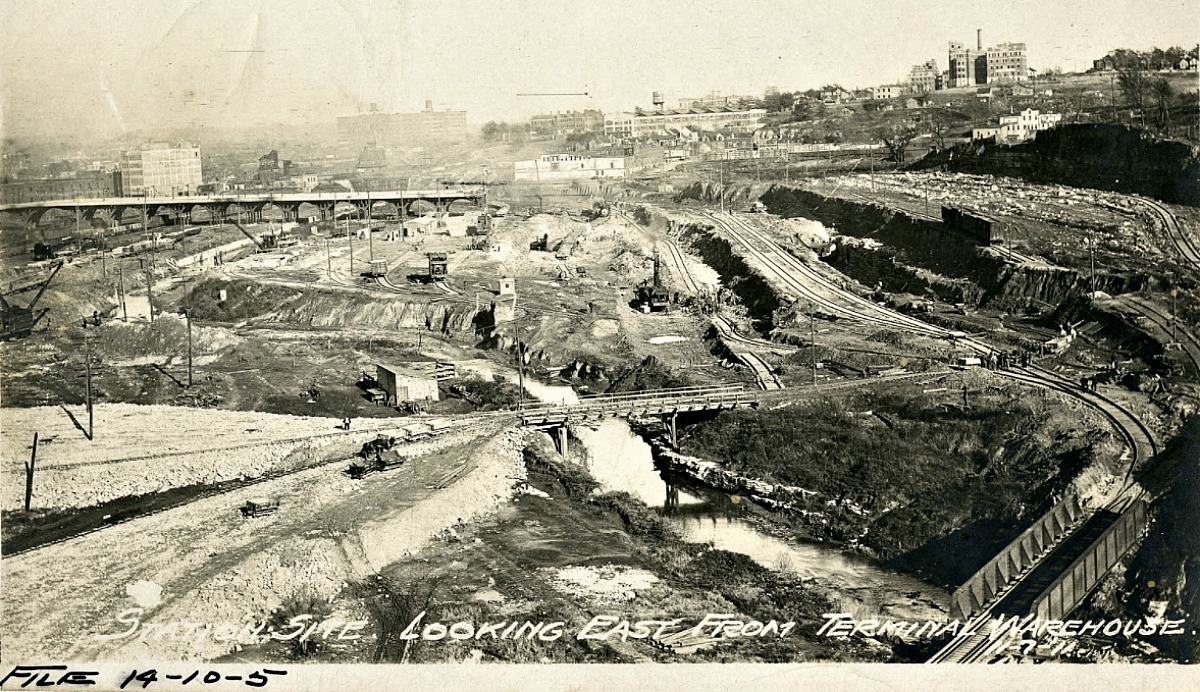
1911 early view of the Union Station construction site shows a scarred landscape heavily manipulated and dramatically reshaped by human hands. OK Creek is still visible in the foreground. Photo courtesy: Missouri Valley Special Collections, Kansas City Public Library, Kansas City, Missouri.
In addition to the maze of pipes, you might also run into pieces of old steam heating systems, coal chutes, hidden storage areas, and fiber for modern utilities — lots of fiber. You’ll see it woven under, over, and in some cases drilled right through unrelated infrastructure.
You might be able to dig up records to help you navigate the underground mess, but don’t count on coming across any grand plans. Pieces of the infrastructure were put in before records were kept or at a time when recordkeeping wasn’t too reliable. Detailed record keeping since then is more helpful, but still only paints part of the picture.
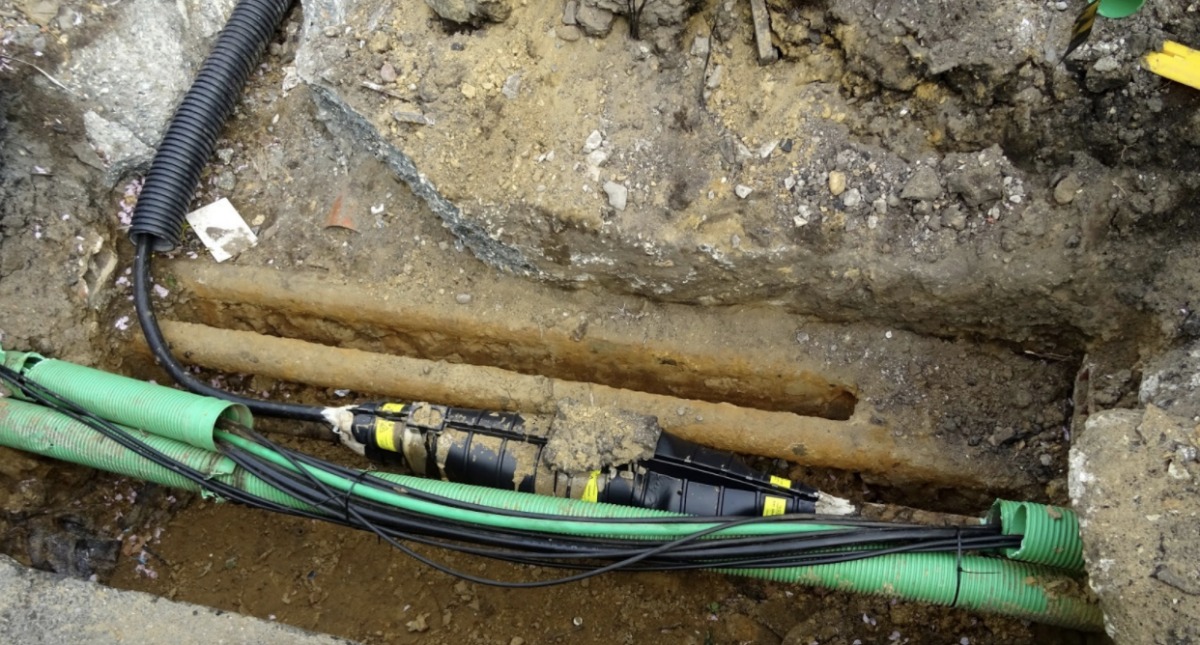
Fiber cables are woven along and around existing infrastructure underground in many cities.
Adding complication to complexity is ‘urban fill,’ a mess all its own left behind mainly by generations of Kansas Citians on the job before more responsible building practices took hold. In the old days, making room for a new building often began with destroying an old one and cramming the debris straight into the ground. The result is a layer of fill material across the area riddled with everything from chunks of concrete and steel to entire cars, trees, and even animal carcasses buried by floods. Be prepared to sort it all out to ensure solid support for the structure you build.
“Don’t make the mistake of assuming you can assess a site without investigative geotechnical work,” Andrew emphasizes. “There’s no other way to get your project up and out of the ground with much certainty. You’ve got to understand what you’re getting into before you dive in. I’ve seen plans change dramatically and entire projects canceled because of something unexpected in the subgrade. Contractors have even gone bankrupt trying to salvage an effort suddenly saddled by difficulties they didn’t know were there.”
The Right Geotechnical Partner is Critical
The perspectives of an esteemed local geologist and public works veteran should be more than enough to convince you that building in the Crossroads is tricky, to say the least. Even if you can shape your project budget around unforeseen surprises, you probably can’t afford the luxury of waiting. The biggest construction threat buried in the subgrade is the one that pressures your timeline. Whether it’s a monkey wrench thrown in by bedrock variations, poor soil quality, groundwater, or man-made conditions, any of it can slow construction or bring it to a full stop. Alpha-Omega Geotech can keep things moving.
“We’ve helped dozens of projects get off to the right start in the Crossroads District,” says AOG President Allan Bush. “We know that area well and know exactly what we’re dealing with. If we can’t solve a subgrade problem in that area, we really don’t think anyone can. Barring truly impossible circumstances, we’ll figure out a solution to keep things going and feasible.”
Bush says the best approach begins with a good geotech partnership upfront before you lock in a specific property. Our team can provide valuable insights during the land acquisition process to help you make smarter decisions. Our drilling technology, testing equipment, and laboratory analysis will clearly identify the quality of soil and bedrock properties on the property you select. If the bedrock is especially deep, we have the experience and confidence to develop alternatives to traditional piering.
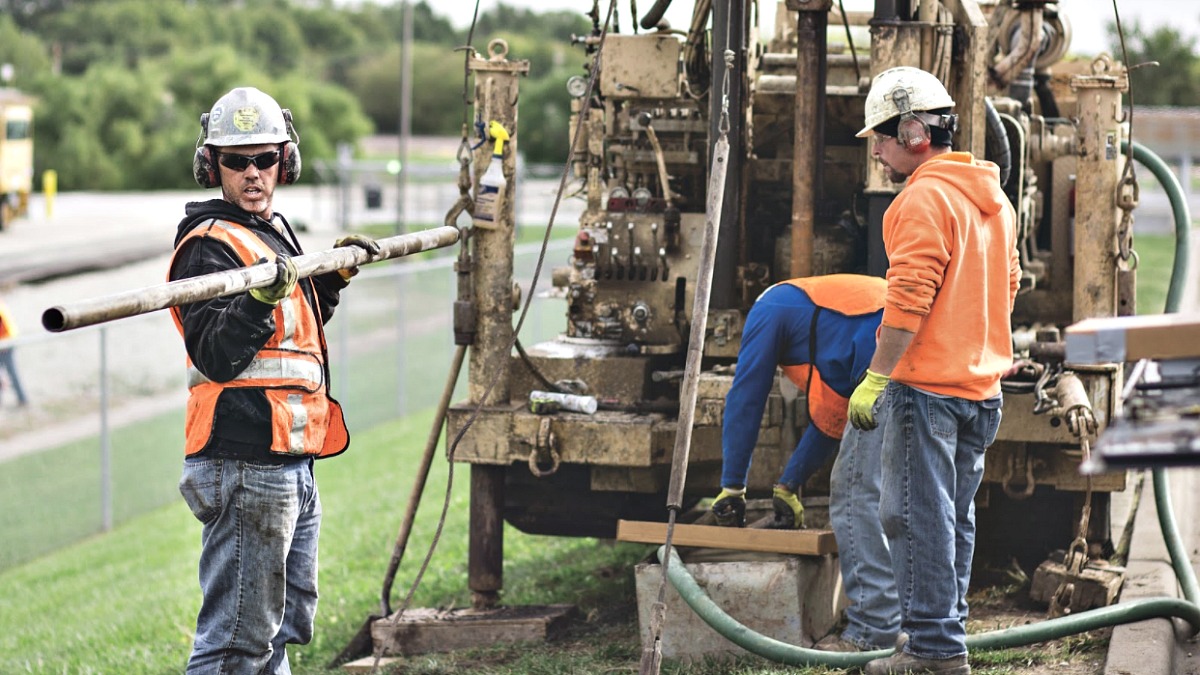
AOG’s drilling expertise and deep drilling capabilities offer Kansas City developers a valuable competitive advantage.
“Depending on the size of the structure you’re building, we can get into alternative platforms that deliver the right support without anchoring them in bedrock. We’re experienced in creating a platform that’s similar to a snowshoe in the way it spreads out to create stability closer to the surface. It’s sort of constructed like a burrito, packed with engineer-controlled fill material and wrapped in geogrid to effectively absorb and distribute the weight of the structure. There are other alternatives as well depending on the situation, including geopiers that improve and strengthen the ground to make it suitable for a spread foundation.”
You likely won’t find national geotech firms or less experienced local firms willing to customize the approach to meet your budget and timeline without sacrificing peace of mind. AOG is a tight group of seasoned professionals with a spectrum of difficult construction projects under our belt on both sides of the state line. We have a long track record of working with industrial brownfields, like the one we helped Custom Truck One Source navigate when they turned an old steel mill into a modern production facility in the Blue River Valley Industrial Corridor.
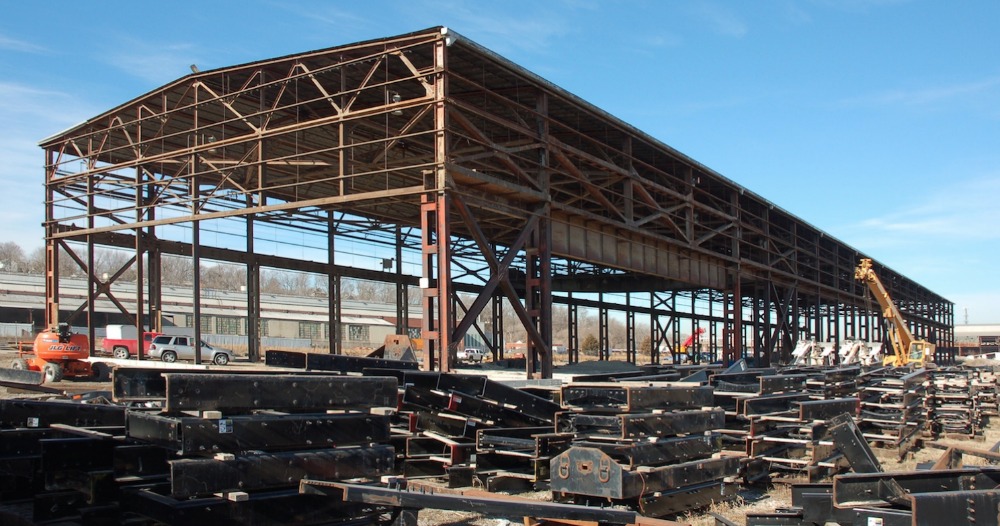
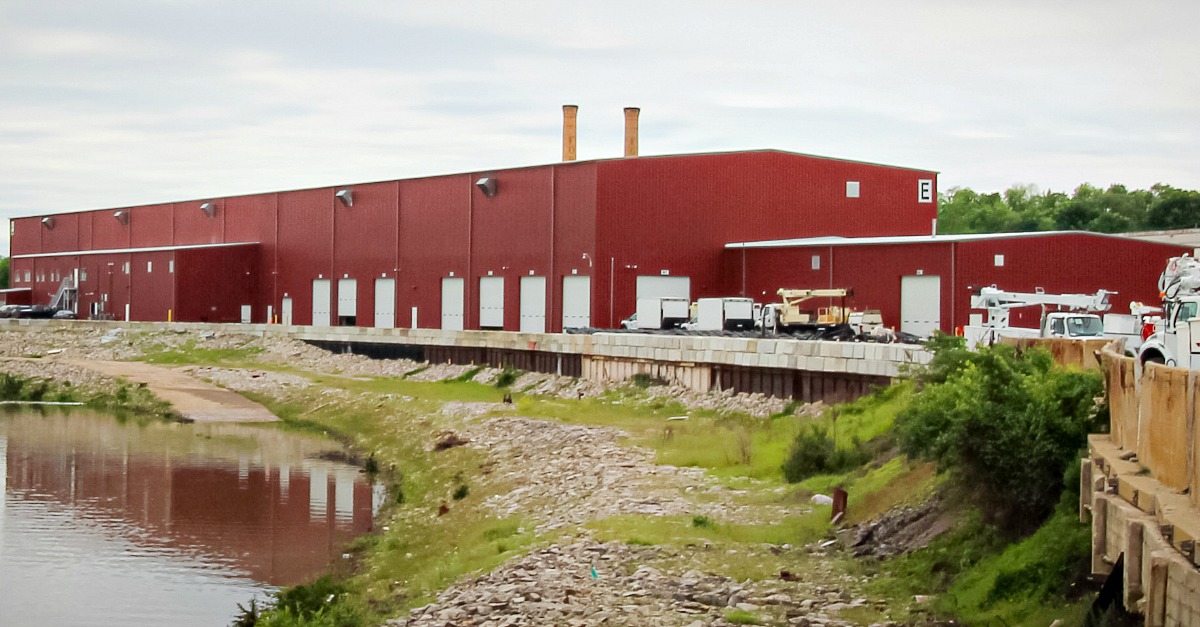
Transformation of a huge structure on brownfield uncertainties in northeast Kansas City.
Continuity is a key part of our performance. Our best work happens when we’re involved from start to finish (from the Alpha to the Omega) and that includes special inspections throughout all phases of construction.
“It’s one thing to have enough experience and expertise to propose an alternative solution and map it out,” explains AOG Business Director Blake Bennett. “But then you’ve got to be able to come in and ensure it all comes together exactly right. You can’t have one without the other without taking unnecessary chances. We confirm every step along the way so you know it’s built exactly the way it was designed.”
A bold new era awaits Kansas City’s Crossroads District and careful planning among experienced professionals could reshape the area into a more progressive neighborhood. Alpha-Omega Geotech has always taken pride in our early development role and we look forward to our especially critical contribution to urban revitalization as the Crossroads area continues to change and grow.
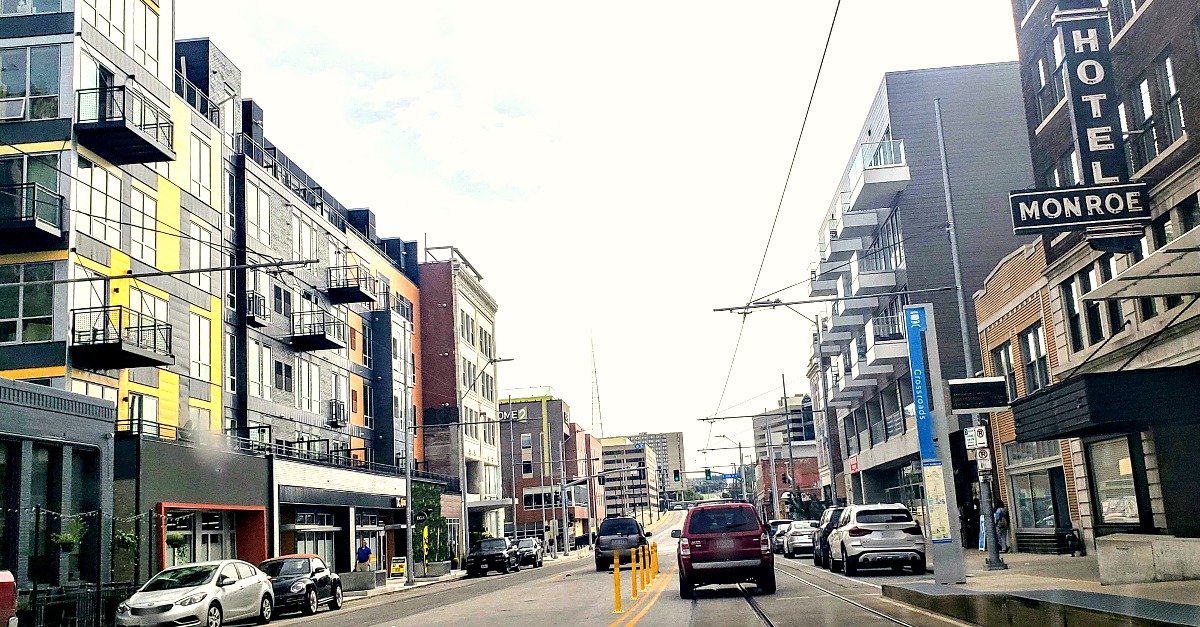
Special thanks to Kissick Construction for the construction photos.

